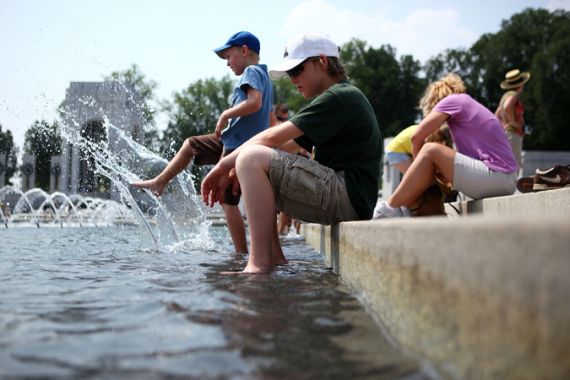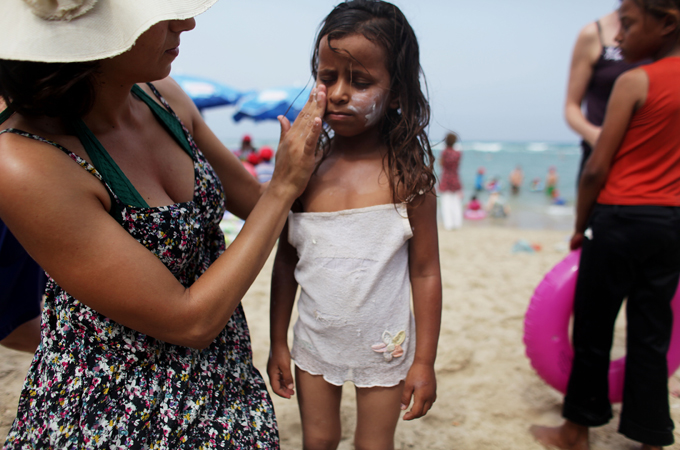European summer heat brings dangers
Many people welcome warm weather while fearing rains, flooding and tornadoes, but too much sunshine can be deadly too.

 |
| Protecting from the burning effects of the Sun [GALLO/GETTY] |
In a recent article we looked at the so-called “European Summer Monsoon”, a loosely identified period during which Europe’s weather is characterised by rain-bearing southwesterly winds. Two of the phases of the ESM are June 9-18 June and July 21-31.
Coincidentally, or otherwise, the end of the first phase has seen a recovery in the weather across Western Europe notwithstanding some large thunderstorms across central areas. Now, with pressure rising, a large dome of warm air is pushing across the continent promising not just fine weather but, for many, hot weather.
Keep reading
list of 4 itemsWorld’s coral reefs face global bleaching crisis
Why is Germany maintaining economic ties with China?
Australia’s Great Barrier Reef suffers worst bleaching on record
Although much of the British Isles will, as so often, miss out on the sunny skies, continental Europe looks set to see temperatures well above average. And the warm air could extend a long way northwards into Scandinavia and the Baltic states.
For some areas it could, technically, be classed as a heatwave. This is defined by the World Meteorological Organisation as a period of more than five consecutive days with temperatures more than five degrees Celsius above average, but definitions vary greatly from country to country.
Whatever the definition, many will welcome a spell of fine weather after a somewhat indifferent early summer.
However, we should be aware of the dangers of prolonged hot weather.
The torrential rains in the Philippines and the flooding and record number of tornadoes over the United States may, rightly, have made the headlines over the last few months, but heat can be a far bigger threat to life.
In the United States, deaths from excessive heat outnumber those of tornadoes and floods combined by a factor of two.
Similarly, Europe must be wary of prolonged hot spells. The European heatwave of 2003 resulted in the deaths of up to 52,000 people.
The death toll in France was such that temporary mortuaries were set up in refrigeration lorries. Another heatwave just three years later also took its toll although estimates of deaths are harder to come by.
It seems we are poor at adapting to the effect of prolonged heat as our bodies suffer dehydration and sunstroke.
In the aftermath of the 2003 heatwave, governments began education programmes to encourage people to avoid the strongest sunshine around the middle of the day; to wear cool clothing and to drink plenty of non-alcoholic fluids.
Today there are more sophisticated warning systems in place. The UK Met Office, for instance, has a Heat Health warning system in place. A red alert, the highest, prompts this advice:
Stay out of the sun. Keep your home as cool as possible – shutting windows during the day may help. Open them when it is cooler at night. Keep drinking fluids. If there is anyone you know who might be at special risk, for example an older person living on their own, make sure they know what to do.
This may seem like nothing more than common sense to many of us, but the statistics would suggest education in this area has a way to go before we all minimise our risk to heat.
So although weather forecasters may be thought to be having an easy life during fine weather, they are likely to be pushing their temperature forecasting skills to the limit to ensure that should temperatures reach heatwave criteria, the public will be suitably forewarned and hopefully forearmed.
For now at least many will be happy to enjoy the hot and sunny weather while it lasts and some will surely be hoping it continues until the second phase of the European Summer Monsoon later next month.